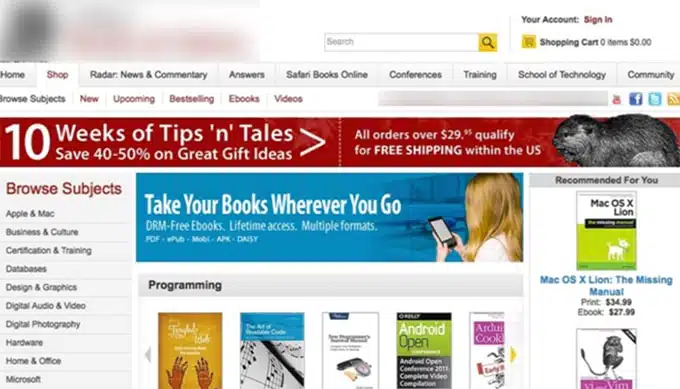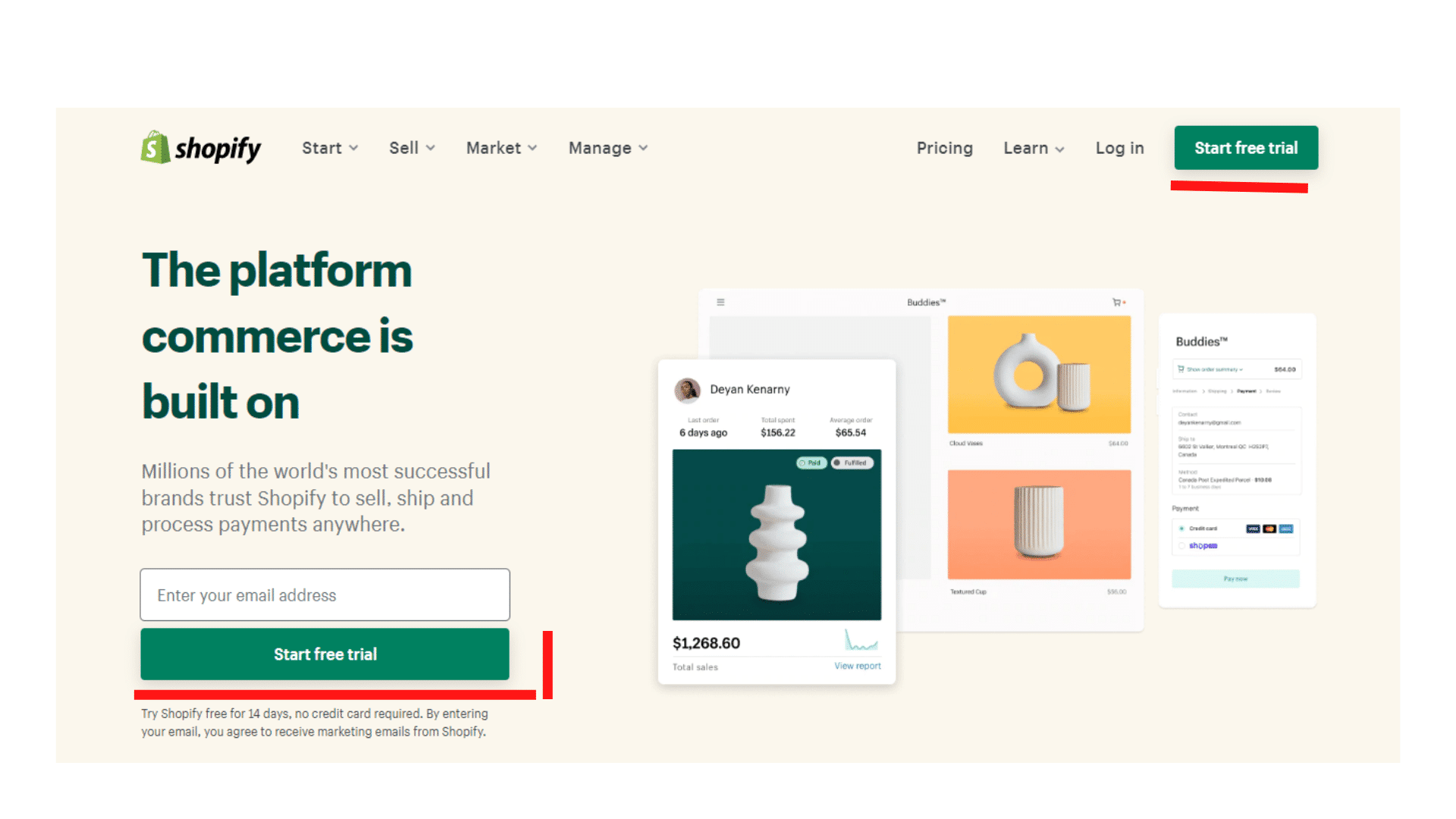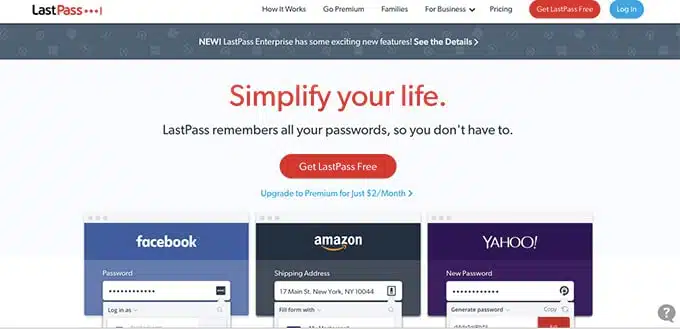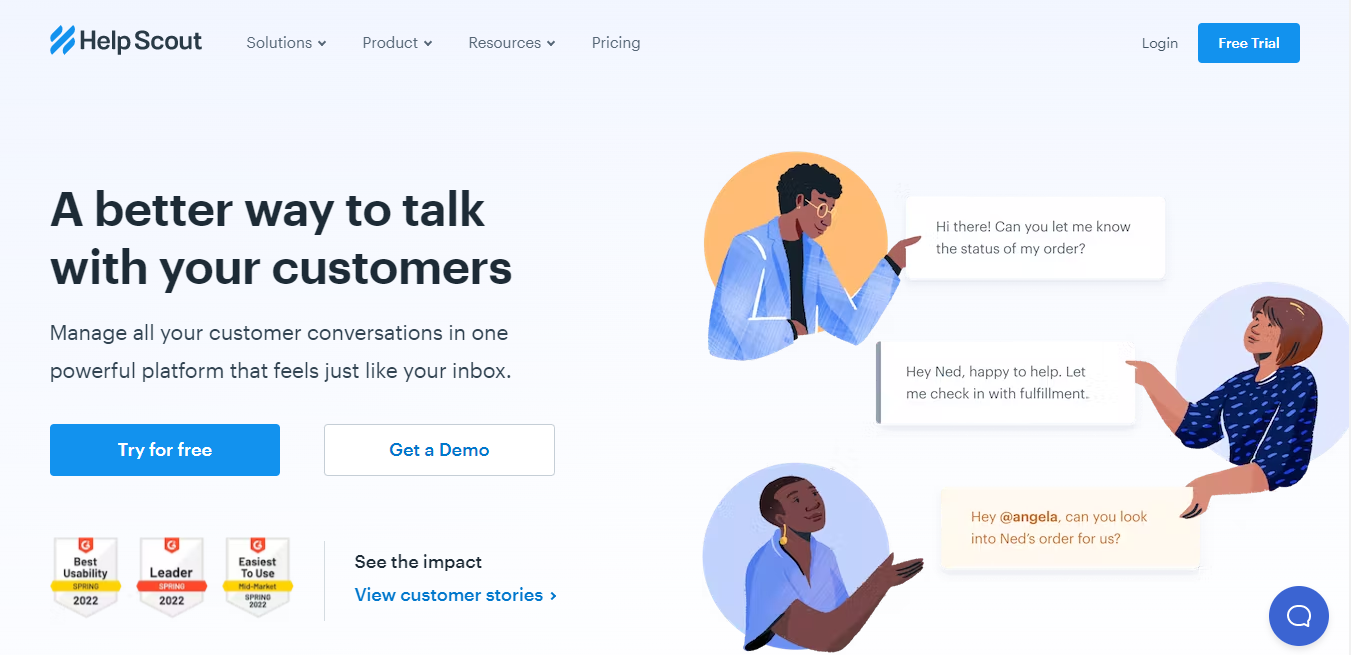According to marketing giant Hubspot, 64% of businesses have a value proposition that is established”.
If done correctly, a value proposition can give your business a huge advantage over your competitors. But, here’s the problem:
Very few businesses have an effective value proposition. As a matter of fact, recent studies confirm: “only 2.2% of companies have useful value propositions.”
This is a huge problem because an ineffective value proposition can make your ideal customers turn to your competitors simply because they don’t immediately understand that you offer what they need.
Furthermore, it’s extremely challenging to distill your company’s services down into one concise sentence. That’s why in this article, we’ll cover what you need to know to develop a highly effective value proposition.
What is a Value Proposition?
In its most basic form, a value proposition is a summary of how your product or service benefits your customers.
Typically, it answers the question:
“What do you do?”
Also, you can use value propositions in different parts of your overall marketing strategy. However, many brands make it the focus of their website’s home page.
But beyond that, it presents the most compelling reasons why a prospective buyer should become a customer and highlights a benefit or feature that sets you apart from every other company in the market.
What a clear value proposition looks like
An effective value proposition that gets the attention of site visitors and the job of convincing them to stay longer on your website and check out your product/service is made up of 4 structures.
1. The headline:
This clear and bold statement says what your product is all about.
Professional tip: always strive for clarity and not persuasiveness when writing your headline.
2. The sub-headline:
This doesn’t have to be a sub-headline, it could be another sentence or two explaining further the benefits of your product.
3. Bullet points:
Here, you dive deep into what separates you from your competition. You don’t want the content layout for your value proposition crowded, so two to three bullet points max.
4. Visuals:
Have a clear picture of your product, preferably in action or your ICP (ideal client profile). This way when they see the visual, they know this fits.
Here’s an example from Trello:

The numbers (1, 2, 3, and 4) show the different elements of their value proposition. Number 1 is their headline, two is their sub-headline, and three is a value proposition booster. What this does is it helps to remove any friction in the mind of potential customers. The one Trello uses is ‘Signup – it’s free.
This way, the site visitor will rationalize it doesn’t cost me anything to try them out and they could be sold into paid plans later down in the funnel.
Element four is a cartoon image of team members collaborating. On the image, you see team members sharing information through their computers. This visual representation sends the message of collaboration to every site visitor who looks at it.
Crafting effective value propositions may sound straightforward but the process can be challenging because they need to be distinct, concise and interesting. They also need to be user-centric, which means focusing on what users need as opposed to what you offer.
As you write your value proposition, think about what you’d want to say if you were sitting across the table from a prospect, having an informal conversation. Never try to impress a potential customer with a language they don’t use. You’ll lose their attention – and likely their business, too.
And you know what else?
A value proposition is not:
- An incentive: The word ‘incentive’ is defined as a ‘positive motivational influence’ designed to incentivize a visitor to act right away. Incentives are not value propositions, but often brands confuse them.
- A catchphrase: A slogan or tagline is “a catchphrase or small group of words that are combined in a special way to identify a product or company.” Slogans are not value propositions, but many brands conflate the two.
- It’s not a positioning statement: A positioning statement is an expression of how a given product, service or brand fills a particular consumer need in a way that its competitors don’t. A positioning statement is a subset of a value proposition, but it’s not the same thing.
Why is it important to have a strong value proposition?

Identifying your unique value proposition compared to your competitors is the main pillar that establishes your success in both marketing and sales.
Additionally, an effective value proposition clearly articulates why a prospective customer should buy from your company instead of a competitor. And as soon as they arrive on your website, your value proposition tells them everything you offer quickly while you have their attention.
Benefits Of A Clear, Compelling Value Proposition For Your Brand.
1. Potential customers can quickly understand what your company has to offer:
Most customers already know what they’re looking for when they research online. So, if it’s not immediately clear that your company can meet their needs, they’ll likely look elsewhere.
2. Creates a strong differential between you and your competitors:
Almost regardless of what you do, you have competitors. An effective value proposition tells the ideal customer why they should buy from you, not the competition. In other words, it provides your company with a unique differentiation.
3. Attracts the right prospects and increases not only the quantity but the quality of prospective leads:
A company’s value proposition targets your company’s ideal customer and explains why your solution is the best option. This increases your chances of attracting the right prospects for your business and finding higher-quality leads that are more likely to convert to customers.
4. Improves customer understanding and engagement:
A powerful value proposition helps your customers truly understand the value of your company’s products and services. It also helps your ideal customers see how your services benefit them and is their best option. With this increased understanding, customers are more likely to become engaged with your services or products.
5. Provides clarity of messaging:
A strong value proposition immediately clarifies to your customers what you offer. Additionally, it also makes sure to communicate your message clearly on all the main entry pages. These include your home page, product pages, and category pages.
How to write a value proposition
1. What you offer
Or simply put a specific explanation of your products or services.
Make sure you take into account the point of view of your target audience and explain your services in a way that will appeal to them.
On top of that, don’t forget wording matters!
Even if you offer exactly what they’re looking for, if it isn’t worded in a way that makes that clear, potential customers will look elsewhere.
Actually, think about your target customers and their needs, and make sure your value proposition addresses their needs as closely as possible. Take into account what your customers are looking for and how they phrase their needs, and incorporate this phrasing into your proposition.
What’s more: “Keep the focus on your audience benefits”
Make sure the focus is on how your services will benefit your audience. Include specific numbers or statistics if possible.
For example, have your customers seen an average percent increase in revenue? Do they save a certain number of hours per week? Have they reported an increase in performance since starting to use your services?
2. Who do you serve
Before you start writing your value proposition you will want to be perfectly clear on who your target audience is.
To accomplish this, research your audience to understand who they are and what they look for in products or services like yours.
You’ll want to have answers to the following questions:
- Who are they (demographic data) and what they do (interests, careers)?
- What are their values?
- What are their needs or pain points?
- What challenges did they experience before working with your business?
- What motivated them to search for what you offer?
- Was there anything about your particular brand that showed that you catered to their needs?
After gathering your data, use this information to develop an ideal customer persona that you can tailor your value proposition to.
3. What differentiates you from your competitors
It’s essential that your value proposition includes a unique selling point or feature that sets your company apart.
Let’s face it, you probably have competitors offering similar products or services. And many of your potential customers will compare their options, so you will need to convince them that you are different and better than all the other competitors.
Even if you already have an idea of your differentiating factors, it’s a good idea to spend some time doing some competitor research. The best way to go about doing this is by checking out their sites and examining their marketing campaigns.
Then ask yourself the following questions:
- What are your competitors lacking?
- What do you do better?
- Why do these differences matter to your customers?
Once you have clear answers to these questions, you can begin to write a more effective value proposition.
A value proposition that causes dissatisfaction (With Examples)
A value proposition is about finding the unique value your business offers its customers compared to other market competitors. The value proposition you offer must resonate with your customers.
A 2017 study published in the Industrial Marketing Management studies the challenge of communicating reciprocal value promises. The authors focus on issues of dissatisfaction and service failures due to the misalignment between the seller’s value proposition and the buyer’s desired value.
The bottom line, make sure that your value proposition resonates well with your customers and that you are able to deliver on it!
Here are some examples:

First of all, I thought this was a solar company, then I saw ‘winds’ and then I thought it was a company that generated electricity using wind. I was expecting to see some panels or wind vanes, not IT.
What you’ll assume is their value proposition ‘Moving IT forward’ is very vague. There’s a disconnect between the site’s name and what they’re offering and they should look into that.

This is a vague headline. At first glance, you’ll assume it’s referring to homeowners. At least, that’s what I’m getting from the visual used.
When I scrolled down, I saw it’s targeted at business owners of all sizes and also there was this amazing headline they can A/B test.

Effective value propositions and their potential impact on conversions
A good value proposition can make all the difference in your sales conversions. It can have a significant impact on conversions, and as a result, revenue.
Similarly, a weak value proposition can result in poor sales.
Consider this case study:
One of our partners who is a well-known educator, publisher and distributor of technical books wanted to maintain their community around their books and content.

There were three main issues that we noticed on their website:
- High pre-product page abandonment rate.
- Low customer retention rate.
- Lack of community around the content.
One of the things our partner did in order to establish a community was to offer a free book alongside the print version to establish the community.
The issue is that they added text below their homepage banner which wasn’t necessary. When you have a strong value proposition and a strong headline, there is no need to add extra text to explain that.
So, we came up with the hypothesis:
Enhancing Value Proposition through copy to match your visitors’ expectation will lead to increased conversions.
The first variation we did was that we changed the banner color background as well as the wording from “DRM-Free eBooks” to The E-Book Advantage”. The text below the banner was expunged because we thought that the banner was self-explanatory. We also changed the image to reflect what is going on.

The second variation we did was to maintain the same design but change the wordings in the banner to “Take Your Books Wherever You Go”.

The results were astounding:
The first variation was the winner and resulted in 26% increase in conversions.
However, when conducted a poll and asked the webinar attendees to choose the better of the two variations, 80% chose the second Version.
From this, we learn that the changes needed to increase conversions may not be so obvious and need real data testing.
What Makes For An Effective Value Proposition.
1. It is specific about the benefits of your customers’ experience:
A good value proposition comes with specificity. It needs to be as specific as possible about your products and services’ benefits to your customers.
2. It shows how you solve a specific problem or address a specific need:
Your value proposition needs to be clear on what problem or need you are addressing and also demonstrate how you solve this problem.
3. It explains why customers choose you over your competitors:
To be effective, a value proposition needs to be written with your ideal customer or buyer persona in mind. It needs to clearly and compellingly explain why the customers should choose you instead of your competitors.
4. It doesn’t include hyperbolic claims (ex. “Best email marketing software in the world!”):
The trouble with hyperbolic claims is that there is no way to prove them and because of this any one of your competitors can say the same thing. Think about your current value proposition and ask if any of your competitors can make the same claim. If the answer is yes, then you don’t have a good value proposition.

And then use the value proposition framework below to craft a winning value proposition and test it against your current proposition.
Value Proposition Framework
Value proposition as a concept was pioneered in the 80s by Micheal Lanning. When he set out this concept, he developed 5 questions which many marketers agree is a winning standard for creating value propositions.
1. Who are the target customers:
Companies that compete in broad categories and are yet to niche down have to fight user attention and cash. When you decide to target a segment of the audience in that broad category, this increases your market share, revenue, and profitability.
2. What is the timeframe:
Developing a value proposition is great, but it has to evolve and that’s because you need to consider user values change and competition coming in with new features that change the game.
With this in mind, write a value proposition for the current time frame and have plans to revise it in the future.
3. What action do you want your target audience to take?
- Use your product in a particular way
- Sell your service/product to their customers or as an affiliate.
- Use your product to make their own product?
Be clear on what you want your target audience to do.
4. What are the competing alternatives to your product?
You need to know what other product your ideal audience will use if not yours. This might mean you using the competition’s product, checking out their value proposition and why it works.
5. What are the benefits to your target audience? What do they stand to gain compared to alternatives?
You need to be clear here. Will they make more sales? Mention that. Is your product promising them more qualified leads? Mention that. Does it make their life easier? Mention that? Is it cheaper? Mention that.
So it’s easier for you to remember and refer to, these are the 5 questions you need to ask to write out an effective value proposition.

Fundamental Question: If I am (who I am) why should I (take this action) rather than (this/these other actions)
Commercial Application: If I am ( your ideal prospect), why should I buy from you) rather than (any of your competitors)
What answering this question does for you is it makes you think like your client. In this instance, you’re not the brand owner, you’re your target audience.
Every answer you get, you sift through them and get your headline, sub-headline, bullet points, and other details you need.
See how straightforward it is?
Here’s a picture of Meclab’s value proposition framework.

Testing your value proposition
After you have conducted customer research and written your proposition, it’s time to test it. This is a step you really don’t want to skip, but it is often overlooked by marketers.
Get this, 54% of marketers do nothing to optimize their value propositions. Testing yours is an easy way to be more effective than roughly half of your competitors.
So, how do you go about testing your value proposition?
Here are some important guidelines
Make sure it meets a few basic criteria:
You want to make sure your value proposition clearly states what your product or service is, and who can benefit from using it.
It’s also extremely important to ask yourself the following question: If placed side-by-side with your biggest competitor’s value proposition, is it clear why a potential customer should choose your business?
Your value proposition needs to set you apart from other companies and to make it clear what benefits you offer that your competitors do not.
Test it with an unbiased reader.
When you test out your value proposition, you will want to include unbiased readers. Because many marketers make the mistake of only including people who are already familiar with their business in the process.
The trouble is that they have likely already formulated their opinions on your brand, which makes them biased readers.
Instead of relying on people who are already customers or aware of your business, ask people who are unfamiliar with your brand to read your value proposition. Ask them what their impressions are, if they are clear on what the product is, and what the benefits are to the ideal customer.
Consider running A/B Tests.
A/B testing is another way to test out the effectiveness of your value proposition. Ideally, A/B testing is a way of comparing two web pages to see which one performs better.
The advantage of running these tests is that it allows you to make changes to your web pages while gathering data on how they perform.
In the case of value propositions, you will want to run tests on your homepage or landing page so you can see which version generates the most engagement and conversions.
The Language To Use In Your Value Proposition Framework
If you’re thinking about using technical language to impress your audience, you’re missing the point.
That will make your value proposition have less value.
The proper language to use when trying to communicate your value proposition to your ideal audience is the current terms your customers are already making use of in describing your product.
How do you find those exact words? User research such as surveys, customer review mining, visiting niche forums, etc.
Here’s an example from Coda;

This is what they’re promising and providing and their wording speaks directly to their ideal user’s need.
Boosters To Improve Your Value Proposition
It’s possible you’ve done everything to get a clear and effective value proposition in front of your audience and your competition has done the same too.
At this point, competing on the macros (defining your headline and sub-headlines) won’t get the job done for you.
Little things can tip the decision in your favor, and I call them boosters.
They boost the value of your value proposition before your ideal audience.
Here are examples of some boosters to get your site visitors to take action.
1. Free
2. Next day shipping
3. Free shipping
4. Cancel anytime
5. Customizable
6. Free Trial
7. Guaranteed
8. Save
9. Join
10. Easy
Think about what other detail/incentive you could add to ‘boost’ the value of your proposition that your competition is not making use of.
Note: this doesn’t have to cost you much.
Here’s an example from Shopify:

‘Start free trial’ encourages the site visitor to take immediate action if the value proposition appeals to them.
Seven Examples Of Value Propositions That Convert
The more I surfed the web looking for one, the more I was convinced that it is very difficult to come up with a memorable value proposition! Although not perfect, below are four examples of value propositions that successfully convert leads to customers.
1. LastPass
Last Pass value proposition reads as follows:
“Simplify your life. LastPass remembers all your passwords, so you don’t have to.”

This proposition focuses on the clear benefit of simplicity and making the customer’s life easier.
It then goes on to explain exactly how it delivers that simplicity, by remembering all your passwords for you.
It is also specific about what the company does, and how its service benefits its customers, both of which are important components of effective value propositions.
2. Lightshot
LightShot value proposition states:
“The fastest way to take a customizable screenshot.”

The main strength of this value proposition is it is clear and concise. Even if a visitor had never heard of Lightshot, it’s immediately clear what they offer.
Also, their emphasis on how convenient and easy it is to use their service helps them to stand out from their competitors.
3. Peet Rivko
Peet Rivko goes with the following value proposition:
“Peet Rivko is a line of plant-based products for sensitive skin.”

This value proposition is very clearly geared towards a specific target audience, who are environmentally conscious people with specific skincare needs. These are people looking for natural products that are gentle and hypoallergenic.
It is evident from reading Peet Rivko value proposition who their audience is and how their products are catered to a specific target customer.
4. Duolingo
Duolingo presents us with another effective value proposition:
“Learn a language for free. Forever.”

The word “free” grabs readers’ attention and explains what the users can expect to gain. The benefits are clear, as Duolingo will provide language instruction for free, which is likely to appeal to language learners without a lot of money to spend on classes or tutoring.
This value proposition also sets Duolingo apart from other companies that provide language instruction with a fee, since they promise unlimited free lessons.
5. Potion
Potion’s has a great value Proposition

This message is short, direct, and easy to grasp.
Personalize videos at scale.
The intended audience will definitely love the directness of this.
6. HelpScout
HelpScout has a unique message in their value proposition

Just like the one on top, this message is also clear and easy to understand at first glance.
There’s no ambiguity or confusion.
7. Unbounce
Unbounce has a direct message that does well as a value proposition

The message speaks to the desire of the intended audience. No confusion, play on words or trying to be smart.
Just direct to the point “smart marketing tools to grow your business.”
Final Thoughts
Value propositions have enormous potential to help your business attract customers, but only when they are written effectively.
This is far easier said than done, as developing a value proposition can be extremely challenging.
In this article, we’ve highlighted some key practices that can help your company write or improve a value proposition, as well as some strategies for testing its effectiveness. In short, you want to keep the language clear and concise, to target your ideal customer and to make it clear what sets you apart from the competition.
If you follow these guidelines, you have a much better chance of developing a value proposition that is effective and helps you to convert more leads into customers.
Frequently Asked Questions On Value Proposition
What is a value proposition definition:
A value proposition is a statement that describes the unique benefits or value that a product or service provides to its customers or users. It is the reason why someone would choose your product or service over alternatives.
What is the purpose of a value proposition?
A value prop is important because it helps to differentiate your product or service from competitors and makes it clear to potential customers why they should choose your offering. It also helps to communicate the benefits and value of your offering to potential customers, which can lead to increased sales and revenue.
What are the key elements of a value proposition?
The key elements of a value proposition include: the target customer or user, the key benefits or value that the product or service provides, and the unique selling proposition (USP) or competitive advantage that sets it apart from alternatives.
How do I create a value proposition?
To create a value proposition, start by identifying your target customer or user and their needs and pain points. Then, identify the key benefits or value that your product or service provides to address those needs and pain points. Finally, determine your unique selling proposition (USP) or competitive advantage and incorporate it into your value proposition.
How do I test my value proposition?
You can test your value proposition by conducting market research and gathering feedback from potential customers. This can be done through surveys, focus groups, or interviews. You can also test your value proposition by running A/B tests or experiments to see how different versions of your value proposition perform.
Can a value proposition change over time?
Yes, a value proposition can change over time as your product or service evolves, your target customer or user changes, or as you identify new or different USPs or competitive advantages. It’s important to regularly review and update your value proposition to ensure it remains relevant and effective.
Additional Resources:
1. 6 DTC eCommerce Websites With Killer Value Proposition
2. How To Connect With Users Emotionally
3. The Ultimate Guide To Persuasive Online Writing







